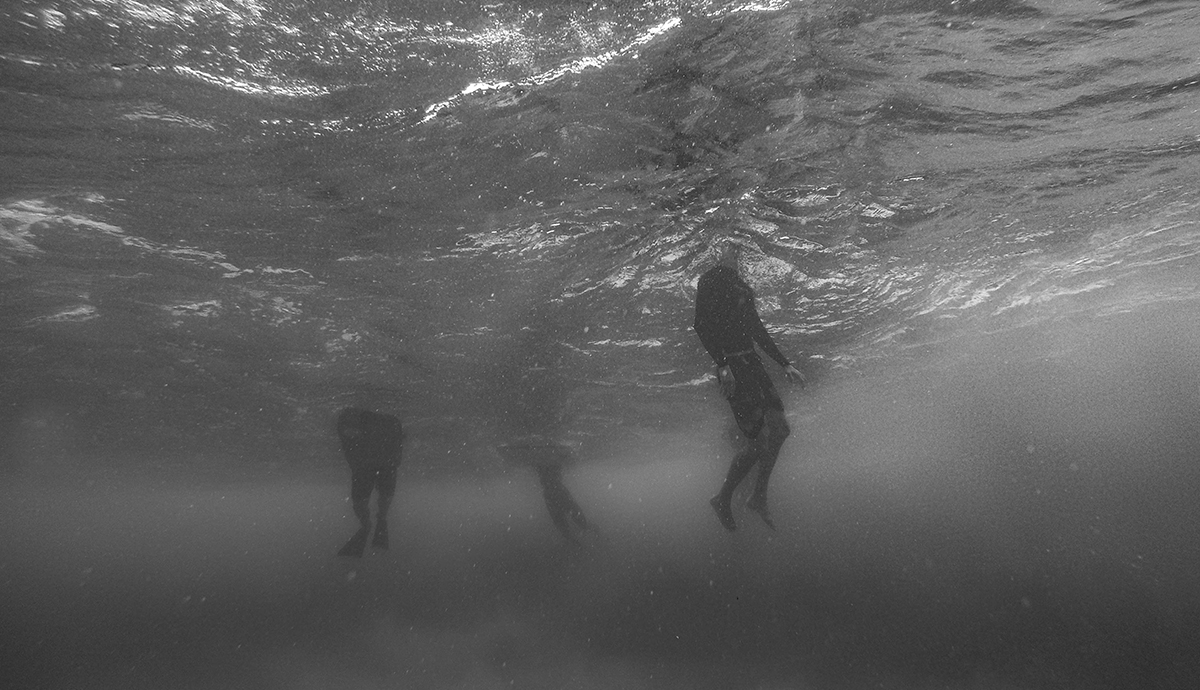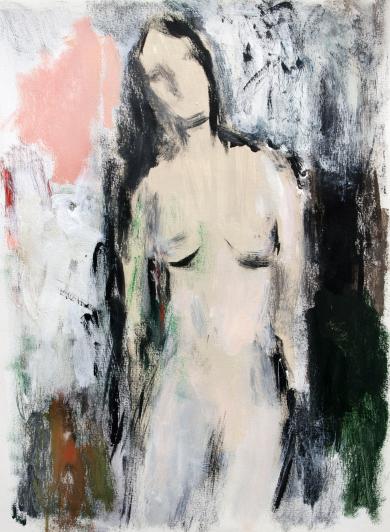In a Tide Drawn Out: Self-Awareness and Sound in “Not a Self-Portrait” from issue 298.2
My mother is the heart of “Not a Self-Portrait.” I wrote it at Trinity College, Dublin, for Carlow University, a dual-residency MFA program in Pittsburgh and Ireland. The poem was in response to “Not the Furniture Game” by Simon Armitage, whom I thank with gratitude. My Carlow mentor in Ireland, the poet Mark Roper, prompted the use of Armitage’s form, a list poem of successive metaphors. The tenor of the metaphor, described by Mark as the “thing standing still,” is my mother. I thought of her as I wrote and hoped to convey feminine archetypes of physical strength and emotional capacity.
It’s a poem about place. Our mothers’ bodies are our first place—my mother’s physical body represents in a fundamental way everything I know about placing myself. I wrote the poem in part to accumulate sound, to layer it thickly and to draw it out, to uncover meaning. It’s a poem of praise and love, but complicated, I hope, by moments of tension and strangeness: “her birth defect was a furry tunneled path.” Writing the poem, I was building towards something both inexpressible and tender. I grounded what felt empyreal in the body itself: “her nostrils were portholes on the Queen Mary/her nose was a tiny drawbridge always down.”
My mother, like most women, is mysterious. She has led both a remarkable and remarkably simple life. As the mother of ten, she was never “the thing standing still.” I was her ninth child and seventh daughter and grew up in a house overrun with women. As a child I found my mother endlessly fascinating. I still do.
My mother is a poet and great reader of poetry. In vivid memories, I hear her shouting poetry from the next room. Her approach to parenting was unconventional. She spoke to us as adults almost from infancy. With a quick wit, she frequently used literature to impart values. An oft-repeated quote from Ralph Waldo Emerson (one of her great loves): “your possessions are your limitations.” She said this when we clamored for material objects she thought we did not need.
My parents were modest, hardworking, and religious. My father was a devout Catholic, but my mother was not. She questioned religious beliefs, and instead of mass sometimes went to the local Baptist or Lutheran church, or to the library. She valued personal freedom and strove to free her mind of the everyday. She did this in part by reading widely and writing poetry. Even now, she mails weekly poems to all ten of us. Generally, these poems respond to the natural world, but lately also reflect coping with aging.
My mother is tiny but physically strong. She has a great capacity for engaging her physical body as well as her mind. She spent hours walking with us in the woods near our home and knew the names of every plant, herb, and tree. She wanted us to love and appreciate the natural world, and worked hard to impart deep awareness of the world outside our home, outside ourselves. Another Carlow mentor, the poet Jan Beatty, described “Not a Self-Portrait” as “very aware of itself, not trying to hide the seams and sound of movement.” I hope it reflects my mother’s awareness.
My mother is a private person with a rich interior life. As with most women, my mother’s interior life was a means of sustenance. It gave her an enormous capacity to endure in some sense. There was a part of her always held in reserve. As a child, I sometimes found that bewildering. She likes to be alone, garden, walk by herself and stargaze at night, read, and write. I admire the effort it took to create and preserve that part of herself, separate from us. Her capacity for being present while remaining separate/apart is also mysterious. I tried to explore that in “Not a Self-Portrait.”
Most of my childhood memories involve sound. Ten children in a modest house can create quite a din. Recently, I visited a sound installation at the Cloisters Museum in New York. “The Forty Part Motet,” by Janet Cardiff, consisted of composer Thomas Tallis’s five hundred-year-old “Spem in alium,”(“In No Other is My Hope”) recorded by forty individual vocalists—each separate voicing emanating from forty delicately arranged high fidelity speakers in the acoustically perfect Fuentidueña Chapel. The effect, like the sounds of my childhood home, was intimate and overwhelming. This effect had as much to do with the listener’s awareness of absent sound, as it did sound’s presence. Hearing sudden near absence of sound merging with simultaneous voices was inexpressibly penetrating. The emptiness created space to experience not only what had passed but what remained. To quote the late great Seamus Heaney, “the space we stood around had been emptied/into us to keep, it penetrated/clearances that suddenly stood open” (From: The Haw Lantern/“Clearances 7”).
“Not a Self-Portrait” is a poem of forty-two lines. Like Cardiff’s installation of “The Forty Part Motet,” my poem attempts to use sound to create heightened awareness. Each line, like an individual voice, works to engage the reader acoustically. I see the lines where sound abates or fades (“her heart was a shell in a tide drawn out”) as places of intimacy and clearing where meaning can penetrate. I find the poem difficult to read aloud; the sound is so thick in parts that it trips up my tongue, but that tripping effect might also inform and complicate.
It’s a poem, I hope, about feminine capacity, to be present and to preserve the inexpressible self. The layering of successive metaphors and sound reflects my mother’s interiority, her complexity. Seamus Heaney, in an early essay, “Feeling into Words,” described poetry as “a revelation of the self to the self.” “Not a Self-Portrait,” in re-imagining the apparent, reveals the unseen. It’s an intimate portrait of the mother I love and a revelation of the wondrous.
"Not a Self-Portrait"
Her hands were trampolines spread across the lawn
and her eyes were the pale green stones that lined a stream
their flecks of brown were fossilized leaves
and her blink was a well-swept room
and her teeth were warm pads of thumbs
and her bite was a kiss with sound.
Her nostrils were portholes on the Queen Mary
and her mouth was a pink life-raft blown up by self-invented pump.
Her hair was a field of cotton picked by hand
and her nose was a tiny drawbridge always down
and her tongue was a candied orange peel
and her call at dusk was a melody
and her smile was a folded arm
and her laugh was a bell choir practicing.
She coughed, and it was Vermont sap.
And her birth defect was a furry tunneled path
and her faith was a river rising to flood
and her neck was a steel drill-bit
and her arms were a garden gate left open after rain.
And her elbows were silk handkerchiefs
and her wrists were circus rings
and her fingers were swan necks curving back
and her palms were desert islands
and her shadow was a hand-held puppet.
Her heart was a shell in a tide drawn out
and her breasts were a ripple of water skipped
and her shoulders were bricks laid up by hand
and her belly was a fine down pillow
and her private parts were the ten Hail Marys
and her stretchmarks were a global map.
The whole system of her blood was salt water and sand
and her legs were sassafras trunks
and her knees were knocking heads
and her ligaments were relics behind glass
and her calves were the curve of an eclipsed sun.
The balls of her feet were soft grass
and her toes were tiny daisies poking out
and her footprints were breadcrumbs
and her promises were chairs drawn to a blazing hearth
and her one-liners were the sound of far-off drums
and her grin was a porch light left on all night
and the last time they talked, there was laughter.
Tess Barry (MA in English, University of Pittsburgh; MFA in Poetry, Carlow University) teaches English at Robert Morris University in Pittsburgh. She was a finalist for the 2013 Poetry Award, Aesthetica Magazine (England), and a 2012 and 2013 finalist for North American Review’s James Hearst Poetry Prize. Her manuscript Spring Barrel is being submitted for publication.
The image accompanying this blog is the work of the Chicago-based artist Sam Lipp, done in response to “Not a Self-Portrait” (www.samlipp.com).



